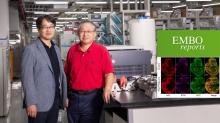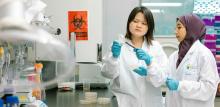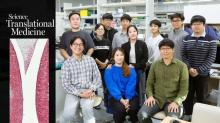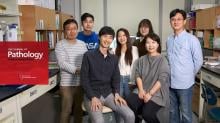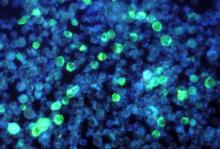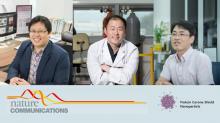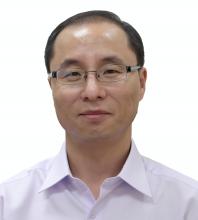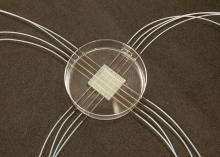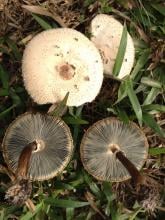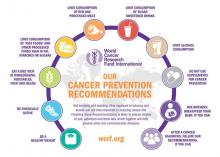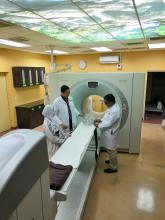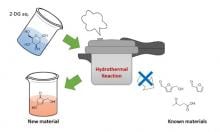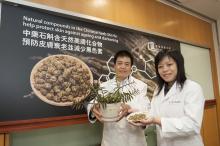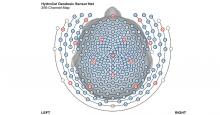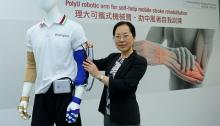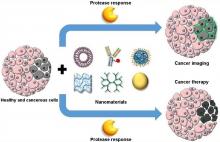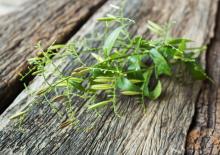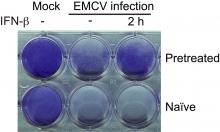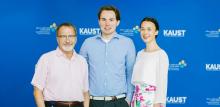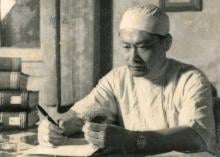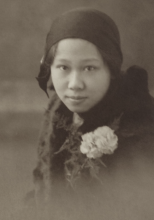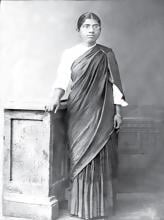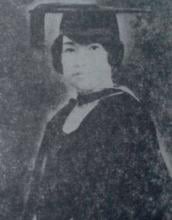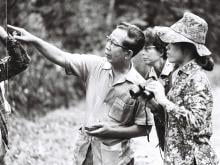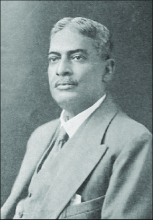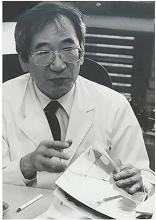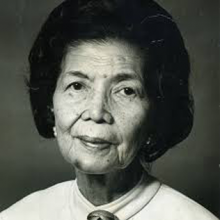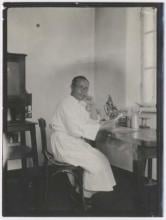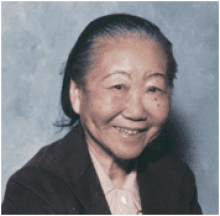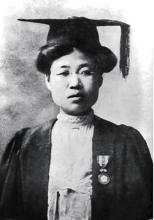Medicine
News

25 Jan 2019
Secure your place today with 20% code ARN20 off the standard rate and join the discussion.
24 Jan 2019
Scientists have successfully constructed a three-dimensional human epidermis based on predictions made by their mathematical model of epidermal homeostasis, providing a new tool for basic research and drug development.
23 Jan 2019
A team of researchers has discovered a key protein that serves as the basic element for the development of intracellular structure of nerve cells.
22 Jan 2019
A combined treatment may help tackle the rise of E. coli PI-7 in Saudi Arabia’s wastewater systems.
21 Jan 2019
Articular cartilages, once injured, cannot regrow or heal on their own. By understanding the mechanisms of how frog embryos develop to form facial cartilages, researchers have identified a novel potential therapeutic target that could pave the way for regenerative treatments for arthritis in humans.
18 Jan 2019
An international team of researchers has identified a novel route that regulates the signaling pathways induced by extracellular matrix (ECM). This may serve as a new diagnostic marker and therapeutic target in the fight against chronic liver diseases.
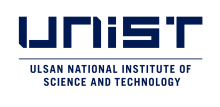
18 Jan 2019
South Korea's Ulsan National Institute of Science and Technology (UNIST) signed an industry-academia cooperation agreement with Daewoong Pharmaceutical Co. Ltd. for AI-based new drug development.
17 Jan 2019
A nucleus-penetrating probe could lead to therapies for virus-related tumours.
17 Jan 2019
A recent study, affiliated with South Korea's Ulsan National Institute of Science and Technology (UNIST) has introduced a novel targeted drug delivery system in the fight against cancer.
17 Jan 2019
Korean researchers have identified the inhibition of autophagy in microglia, brain immune cells. It is expected to help develop treatments for Alzheimer’s diseases which occur due to the inhibition of autophagy.
17 Jan 2019
HKBU scholars invented the world’s first multidimensional antimicrobial susceptibility testing system. The new technology can provide information about drug resistant pathogens present in patients, enabling doctors to accurately determine the effectiveness and appropriate dosage of antibiotics needed for effective treatment.
07 Jan 2019
Korean researchers have clarified the fundamentals of coiled toxin protein which causes neurodegenerative brain disorders. The result is expected to speed the development of treatment for neurodegenerative disorder.
17 Dec 2018
Major study of 7,663 Malaysian women shows that breastfeeding, physical activity and soy intake are protective against breast cancer. The findings were from the Malaysian Breast Cancer (MyBrCA) genetic study and the Malaysian Mammographic Density (MyMammo) study.
17 Dec 2018
Chlorophyllum molybdites is the poisonous mushroom most frequently reported in Malaysia. The mushroom is confused with Termitomyces mushroom, the edible type. Researchers worked with clinicians and provide training for the doctors about the study of fungus, clinical management of mushroom poisoning and mushroom toxicology surveillance system.

13 Dec 2018
This book presents the general neurosurgery problem-based learning that combines case studies and pathology illustration in a simple and easy to understand way. The book is currently published in Mandarin and is hoped to be translated to other languages in the near future.
27 Nov 2018
Research shows that up to 50 percent of cancer cases and deaths are preventable. Cancer prevention is the most cost-effective and sustainable long-term strategy for the control of cancer.
23 Nov 2018
Tests show an association between how aggressive a tumour is and the levels of sugar and inflammatory proteins in the blood.
21 Nov 2018
Tohoku University researchers are optimizing methods to produce useful compounds from biomass.
21 Nov 2018
Loss of a protein called TRIM29 promotes cancer cell invasion in a common type of skin cancer, suggesting a novel diagnostic marker and a possible therapeutic target.
14 Nov 2018
The Hong Kong Polytechnic University (PolyU) reached strategic collaborative research framework agreements with China Resources Microelectronics Limited (CR Micro) and China Resources Life Science Industry Development Co., Ltd. (CR Life Science).
13 Nov 2018
Researchers from the School of Chinese Medicine (SCM) at Hong Kong Baptist University (HKBU) have discovered that the natural compounds found in two orchid species can effectively lighten skin and protect it from damage.

02 Nov 2018
UM researcher Dr. Chai Lay Ching was awarded the L'Oreal-UNESCO for Women in Science National Fellowship for her research in developing a real-time method to detect dangerous bacteria causing food-borne diseases in raw chicken.
01 Nov 2018
A new statistical tool for collectively analyzing large sets of brainwaves promises to accelerate neurofunctional research.
31 Oct 2018
The Hong Kong Polytechnic University (PolyU) recently developed a robotic arm to facilitate self-help and upper-limb mobile rehabilitation for stroke patients.
30 Oct 2018
A technique to generate large amounts of giant vesicle (liposome) dispersion has been developed. The technique involves adsorbing a lipid into a silicone porous material resembling a "marshmallow-like gel" and then squeezing it out like a sponge by impregnating a buffer solution.
29 Oct 2018
Nanomaterials that respond to cancer-specific stimuli show potential in the targeted delivery of treatments and imaging compounds, but many challenges remain.
29 Oct 2018
Understanding the economic value of medicinal plants in Malaysia’s Bidayuh community could help develop a better conservation strategy.

26 Oct 2018
A recent study from the Madras Diabetes Research Foundation, Chennai, India & University of Lyon, France – brings a new hope for using ‘liquid-biopsy’ exosomal microRNA biomarkers (miRNAs) from urine to predict risk for kidney disease in diabetes patients.
25 Oct 2018
The innate immune system may be able to be trained to react to viral infections more efficiently by repeated exposure to anti-viral signaling molecules.
24 Oct 2018
A window opens for analyzing the distribution of small molecules in biological and medical tissue samples
Researchers
Sorry, no researchers coming up for this topic.
- « first
- ‹ previous
- 1
- 2
- 3
- 4
Giants in history
Vietnamese surgeon Tôn Thất Tùng (10 May 1912 – 7 May 1982) developed a pioneering technique that reduced the risks and mortality rate of liver operations.
Michiaki Takahashi (17 February 1928 – 16 December 2013) was a Japanese virologist who developed the first chickenpox vaccine.
Irene Ayako Uchida’s (8 April 1917 – 30 July 2013) strides to understand genetic diseases such as Down syndrome paved the way for early screening of chromosomal abnormalities in foetuses.
Baron Kitasato Shibasaburo (29 January 1856 – 13 June 1931) was a Japanese physician and bacteriologist whose work led to a new understanding of preventing and treating tetanus, diphtheria and anthrax.
Maggie Lim (5 January 1913 – November 1995) was a Singaporean physician who promoted family planning and expanded the access to clinics to improve the quality of life for mothers and children in Singapore’s early days.
By isolating soil microorganisms and studying the compounds they produce, Satoshi Omura (born 1935) discovered almost 500 organic compounds with unique properties that were produced by these microorganisms, including many new antibiotics.
The founder of the Adyar Cancer Institute in India, Muthulakshmi Reddy (30 July 1886 – 22 July 1968), fought to uplift women and girls from impoverished situations.
Chinese-American virologist and molecular biologist Flossie Wong-Staal (27 August 1946 – 8 July 2020) was the first scientist to clone HIV and determine the function of its genes.
Maharani Chakravorty (1937 – 2015) was one of India’s earliest molecular biologists whose research paved the way for advances in the treatment of bacterial and viral infections.
Archana Sharma (16 February 1932 - 14 January 2008) conducted research into plant and human genetics that expanded the understanding of both botany and human health. In relation to botany, she uncovered the means by which asexually-reproducing plants evolve into new species.
The first Thai woman to receive a degree in medicine, Margaret Lin Xavier (29 May 1898 – 6 December 1932), is best remembered for her compassion towards her less privileged patients.
In 1915, pathologist Katsusaburo Yamagiwa and his research assistant Koichi Ichikawa became the first to prove that chronic exposure to chemicals can cause cancer.
In 1915, Koichi Ichikawa along with pathologist Katsusaburo Yamagiwa became the first to prove that chronic exposure to chemicals can cause cancer.
Husband and wife team, Kimishige (3 December 1925 – 6 July 2018) and Teruko Ishizaka (28 September 1926 – 4 June 2019) discovered the antibody class Immunoglobulin E (IgE) that triggers allergic reactions. They also discovered that IgE antibodies attach to white blood cells, known as mast cells, releasing histamine, which causes allergic reactions.
Husband and wife team, Kimishige (3 December 1925 – 6 July 2018) and Teruko Ishizaka (28 September 1926 – 4 June 2019) discovered the antibody class Immunoglobulin E (IgE) that triggers allergic reactions. They also discovered that IgE antibodies attach to white blood cells, known as mast cells, releasing histamine, which causes allergic reactions.
Japanese chemist Takamine Jokichi (3 November 1854 – 22 July 1922) founded the Tokyo Artificial Fertilizer Company, where he isolated a starch-digesting enzyme (named takadiastase) from the fungus Aspergillus oryzae.
Ground-breaking cancer researcher Kamal Jayasing Ranadive (8 November 1917 – 11 April 2001) advanced the understanding of the causes of leukaemia, breast cancer and oesophageal cancer through the use of animal models. She was also among the first to recognise how susceptibility to cancer is linked to tumour-causing interactions between hormones and viruses.
The research of Filipino pharmaceutical chemist Luz Oliveros-Belardo (3 November 1906 – 12 December 1999) focussed on essential oils and other chemicals derived from native Philippine plants.
Thai physician and conservationist Boonsong Lekagul (1907 – 1992) made major contributions to the preservation of his country’s wildlife.
Indian scientist and physician Upendranath Brahmachari (19 December 1873–6 February 1946) is best known for creating a drug called Urea Stibamine, used to safely and reliably treat visceral leishmaniasis (or Kala-azar), a severe infection caused by the Leishmania parasite.
Filipino chemist and pharmacist Manuel A. Zamora (29 March 1870 – 9 July 1929) is best remembered for his discovery of the tiki-tiki formula to combat beriberi, a disease caused by Vitamin B1 deficiency.
Korean parasitologist Seung-Yull Cho (16 November 1943 – 27 January 2019) is remembered largely for his pioneering works to control infections caused by helminthic parasites and his contribution to journal publishing.
Fe Villanueva del Mundo (27 November 1911 – 6 August 2011) was a Filipina paediatrician who founded the Philippines’ first paediatric hospital.
After witnessing death and suffering as a youth in his home village during World War II, Nguyễn Tài Thu (6 April 1931 – 14 February 2021) set his sights on alleviating pain by becoming a doctor. After studying Traditional Chinese Medicine in China in the 1950s, Thu returned to Vietnam to serve in military hospitals. Eventually, he became the country’s foremost practitioner of acupuncture, a technique he first learned by inserting needles into himself.
Minoru Shirota (April 23, 1899 – March 10, 1982) was a Japanese microbiologist who invented the popular fermented drink Yakult.
Wu Lien-teh (10 March 1879 – 21 January 1960) was a Malaysian-born doctor who invented a mask that effectively suppressed disease transmission. Winning the prestigious Queen’s Scholarship enabled Wu to become the first Chinese student to study medicine at the University of Cambridge.
David T. Wong (born 1936) is a Hong Kong-born American neuroscientist who is best known for discovering the antidepressant drug fluoxetine, better known as Prozac.
Indian organic chemist Asima Chatterjee (1917 to 2006) studied the medicinal properties of plant products, especially compounds known as vinca alkaloids.
Chika Kuroda (24 March 1884 – 8 November 1968) was a Japanese chemist whose research focussed on the structures of natural pigments.
Umetaro Suzuki (7 April 1874 – 20 September 1943) was a Japanese scientist best remembered for his research on beriberi, a disease caused by vitamin B1 deficiency, characterized by limb stiffness, paralysis and pain.
Salimuzzaman Siddiqui (19 October 1897 – 14 April 1994) was an artist and chemist from Pakistan whose research focused on natural products from plants.
Barry Paw (29 August 1962 – 28 December 2017) was a biologist and oncologist who discovered several novel genes and their functions in red blood cells.
Syed Qasim Mehdi (13 February 1941 – 28 September 2016) was a Pakistani molecular biologist who was a founding member of the Human Genome Diversity Project (HGDP), which assessed human diversity by studying human migration, mutation rates, relationships between different populations, genes involved in height and selective pressure.
Tsai-Fan Yu (1911 – 2 March 2007) was a Chinese-American physician and researcher who was the first female full professor at Mount Sinai School of Medicine. She discovered that gout, a condition characterized by the painful inflammation of joints, was caused by elevated levels of uric acid in the bloodstream.
Min Chueh Chang (10 October 1908 – 5 June 1991) was a Chinese-American biologist who studied fertilization in mammalian reproduction.
A Japanese surgeon, Tetsuzo Akutsu (20 August 1922 – 9 August 2007) built the first artificial heart capable of keeping an animal alive.
Ogino Ginko (3 March 1851 – 23 June 1913) was the first registered female doctor to practise modern medicine in Japan.
Esther Park (1877-1910), born Kim Jeom-dong, was the first female Korean physician to practise modern medicine in Korea and trained the first generation of Korean female doctors.


